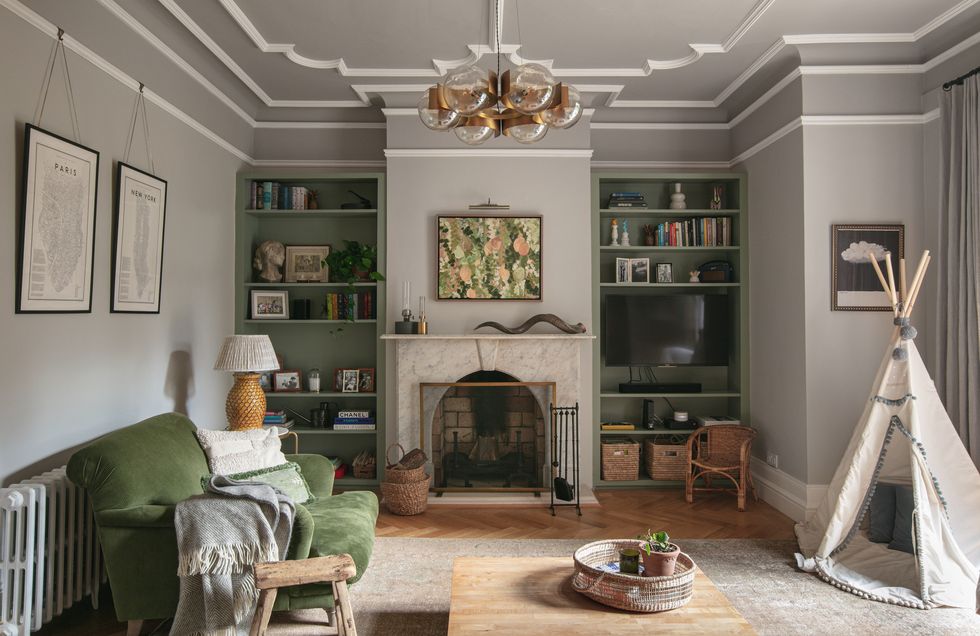Change Your Home With Crucial Principles of Interior Decoration and Aesthetic Appeals
By understanding the impact of shade concept and the relevance of texture and patterns, one can produce spaces that are not just visually appealing but also deeply individual. Achieving this balance involves even more than mere decoration; it includes a strategic arrangement and an eager understanding of just how each aspect communicates within an area.
Understanding Shade Concept
Comprehending the principles of color theory enables developers to create rooms that resonate mentally with occupants while satisfying useful demands. Each group plays a vital role in developing harmony within an area.
The psychological impact of colors is extensive; cozy shades such as reds and oranges stimulate power and warmth, while amazing tones like blues and environment-friendlies promote peace and harmony. The usage of complementary shades improves aesthetic interest, developing striking contrasts that can elevate a room's charm.
Neutral colors, on the other hand, work as a versatile backdrop, permitting various other layout components to shine. It is vital to think about aspects such as illumination and the room's function when selecting a shade palette, as these can change the understanding of shades throughout the day.
Inevitably, a well-considered color pattern can transform a room, cultivating a feeling of convenience and design that straightens with the inhabitants' choices. Mastery of shade theory is, consequently, a crucial ability for any type of indoor developer aiming to develop unified and inviting settings.
Attaining Equilibrium in Style
Exactly how can developers accomplish a sense of stability in their areas? Accomplishing balance in style is fundamental to creating unified interiors. Designers can make use of 3 primary kinds of balance: symmetrical, unbalanced, and radial. Symmetrical balance entails organizing components evenly around a main factor, promoting a sense of order and tranquility. This type typically features sets of furnishings or art work, improving visual stability.
Unbalanced equilibrium, on the other hand, depends on differing elements that still accomplish a cohesive look. This technique enables even more dynamic and casual plans, giving passion while maintaining equilibrium. By meticulously picking differing dimensions, shades, and appearances, developers can develop an aesthetically engaging area that really feels well balanced yet energetic.
Radial balance stresses a main centerpiece with components emitting exterior. This design is typically seen in circular designs, where furniture and style produce a natural surround that attracts the eye inward.
Eventually, attaining balance requires thoughtful consideration of range, proportion, and the connections between aspects. miami interior design. By masterfully applying these balance concepts, designers can change rooms right into environments that feel both visually pleasing and functionally harmonious, boosting the total experience for residents
Value of Spatial Awareness

An eager sense of spatial awareness allows developers to identify prime focus within a room, leading the customer's focus to vital attributes while maintaining an overall sense of unity. It likewise assists in the critical placement of illumination, which can dramatically affect the understanding of area and mood. In addition, understanding spatial partnerships makes it possible for the designer to accommodate the particular demands of residents, guaranteeing that each area offers its desired purpose without compromising aesthetic appeals.
Eventually, spatial awareness is crucial for optimizing the possibility of any type of indoor room. By very carefully taking into consideration the interplay between measurements, format, and function, designers can create settings that not only fulfill useful demands however likewise evoke a feeling of convenience and elegance, boosting the total living experience.
Including Texture and Patterns
Embracing a varied series of textures and patterns can considerably improve the visual and responsive charm of an indoor space. The critical use various materials-- such as timber, metal, material, and rock-- creates depth and interest, making an area feel more welcoming and vibrant. Combining smooth surfaces with rough appearances can establish a balance that attracts the eye and involves the detects.
When incorporating patterns, consider both range and repeating. Large patterns can act as centerpieces, while smaller, refined layouts can match various other aspects without overwhelming the area. Layering patterns, such as pairing floral paddings with candy striped throws, Learn More Here adds intricacy and a sense of harmony if implemented thoughtfully.
It is additionally essential to maintain a cohesive color scheme, ensuring that textures and patterns collaborate instead of complete for focus. By picking a few key textures and patterns, you can produce a linked visual that reflects your personal style while enhancing the overall ambiance of the room. Ultimately, the mindful consolidation of these elements can transform an ordinary area right into an advanced environment rich with character and heat.
Individualizing Your Area
Creating an area that mirrors your personality is crucial to accomplishing a really inviting environment. Personalization in interior design permits you to instill your unique style and passions right into your home, changing it from a simple shelter into a shelter that speaks to who you are. Begin by choosing a color combination that reverberates with your feelings-- bold hues can invigorate, while soft tones use peace.
Integrate art work and decor that mirror your enthusiasms, whether it be traveling, nature, or abstract concepts. Displaying individual collections, such as publications, photographs, or mementos, can evoke cherished memories and develop centerpieces within a space. In addition, think about customizing functional items, like upholstered furnishings, to align with your visual preferences.

Final Thought
In conclusion, the transformation of a home through the important concepts of interior decoration and aesthetics necessitates a comprehensive understanding of color theory, equilibrium, spatial recognition, texture, and customization. Each element click here to find out more adds substantially to producing a harmonious and functional living setting - Architecture Firm. By thoughtfully integrating these concepts, individuals can enhance the aesthetic allure and psychological vibration of their areas, inevitably promoting a click for info home that mirrors distinct identities while giving comfort and practicality